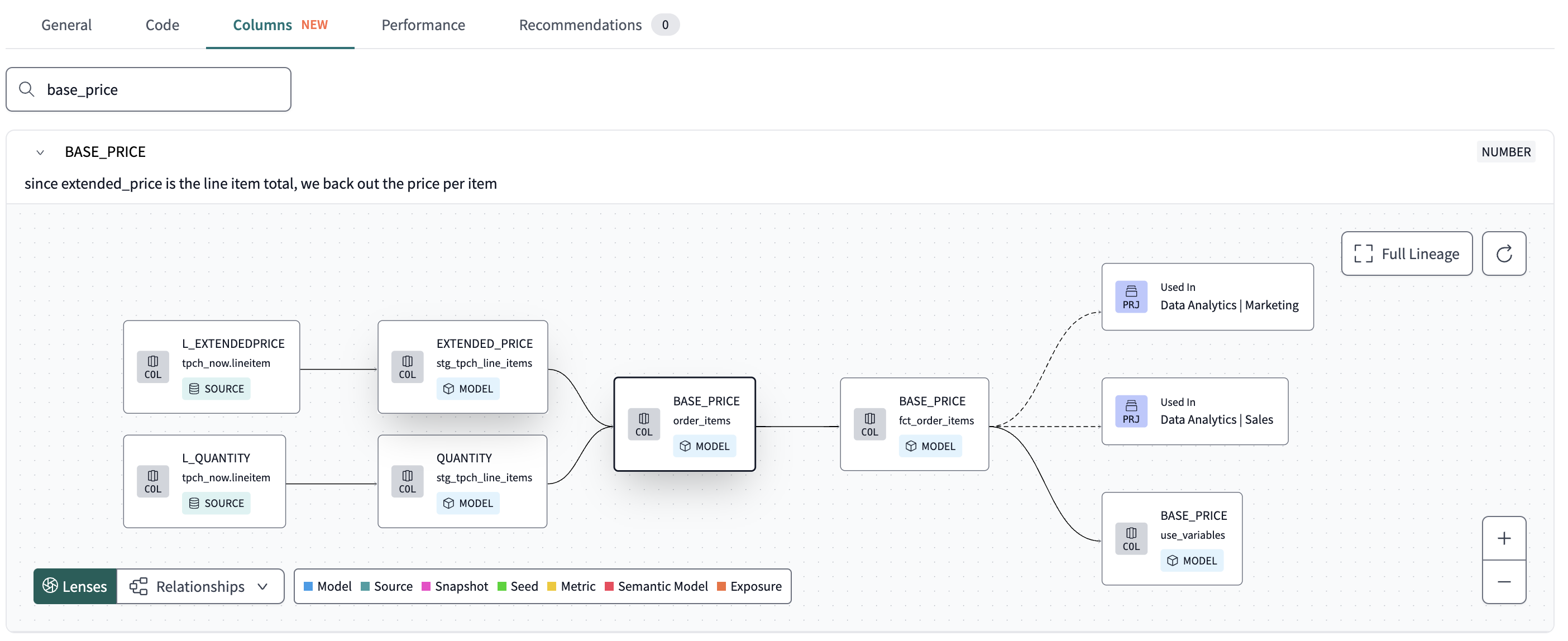Recently, dbt (data build tool) released Column-Level Lineage (CLL) within dbt Explorer, offering granular insights into the origins and transformations of data at the column level.
What is Column-Level Lineage (CLL)?
Column-Level Lineage is a powerful feature that provides detailed lineage information for each column within resources such as models, sources, or snapshots in a dbt project.
This feature allows users to track the flow of data from its origin to its usage in downstream processes. It’s particularly useful for understanding how each column is transformed or reused across different stages of data processing.
How to Access Column-Level Lineage
Accessing CLL is straightforward for dbt Cloud Enterprise users:
- Navigate to the Columns tab on an Explorer resource details page (model, source, or snapshot)
- Expand the column card to view the lineage information
dbt Cloud updates this lineage after each run in the production or staging environment, reflecting the latest transformations and sources for each column.
Practical Applications of Column-Level Lineage
1. Root Cause Analysis: When troubleshooting data pipeline issues, CLL helps pinpoint where errors originate. For instance, identifying an untested column upstream that caused a data test failure in a dbt model becomes easier with CLL, facilitating quicker resolutions.
2. Impact Analysis: During development or when making changes to data models, analytics engineers can use CLL to assess the broader impact of their modifications. This insight minimizes unforeseen issues and streamlines the review process for pull requests.
3. Collaboration and Efficiency: Understanding column lineage enhances collaboration among team members by providing clear visibility into data dependencies. This transparency empowers analysts and engineers to make informed decisions, thereby improving overall efficiency in data management and development.
Addressing Challenges and Limitations
While CLL offers powerful capabilities, it’s important to be aware of its limitations:
- Column Usage: CLL primarily reflects lineage from select statements in SQL code. It may not capture all data usages like joins and filters.
- SQL Parsing: Errors can occur during lineage tracking, especially with complex SQL structures or when using Python models within the lineage, which dbt might not fully parse.
Conclusion
Column-Level Lineage in dbt Explorer represents a significant advancement in data lineage tracking, enabling analytics teams to navigate data pipelines with greater precision and confidence. By providing detailed insights into the flow of data at a granular level, CLL supports critical tasks such as debugging, impact assessment, and collaborative decision-making.
For analytics engineers and data analysts looking to optimize their dbt workflows and enhance data reliability, exploring Column-Level Lineage in dbt Explorer is not just a recommendation—it’s a strategic advantage.
You can read more in the dedicated dbt docs page.







